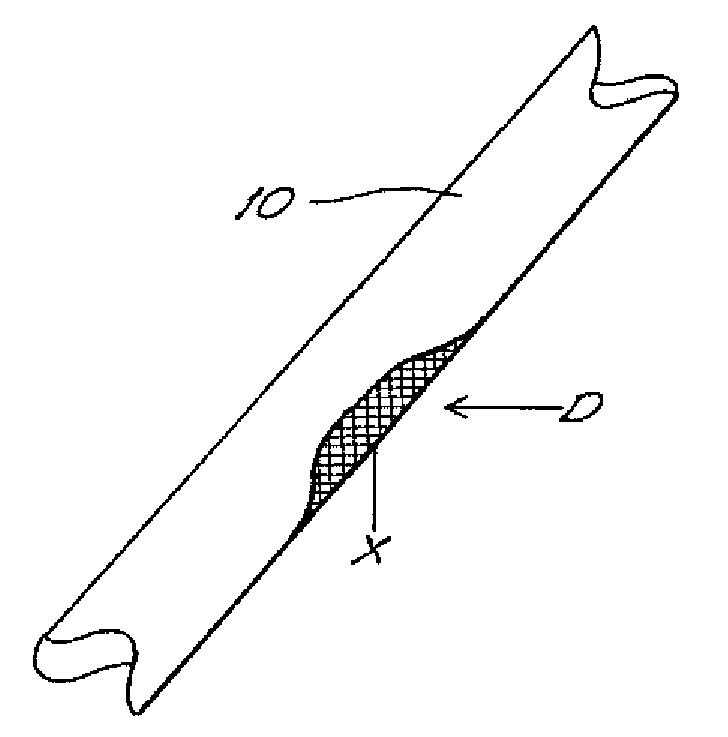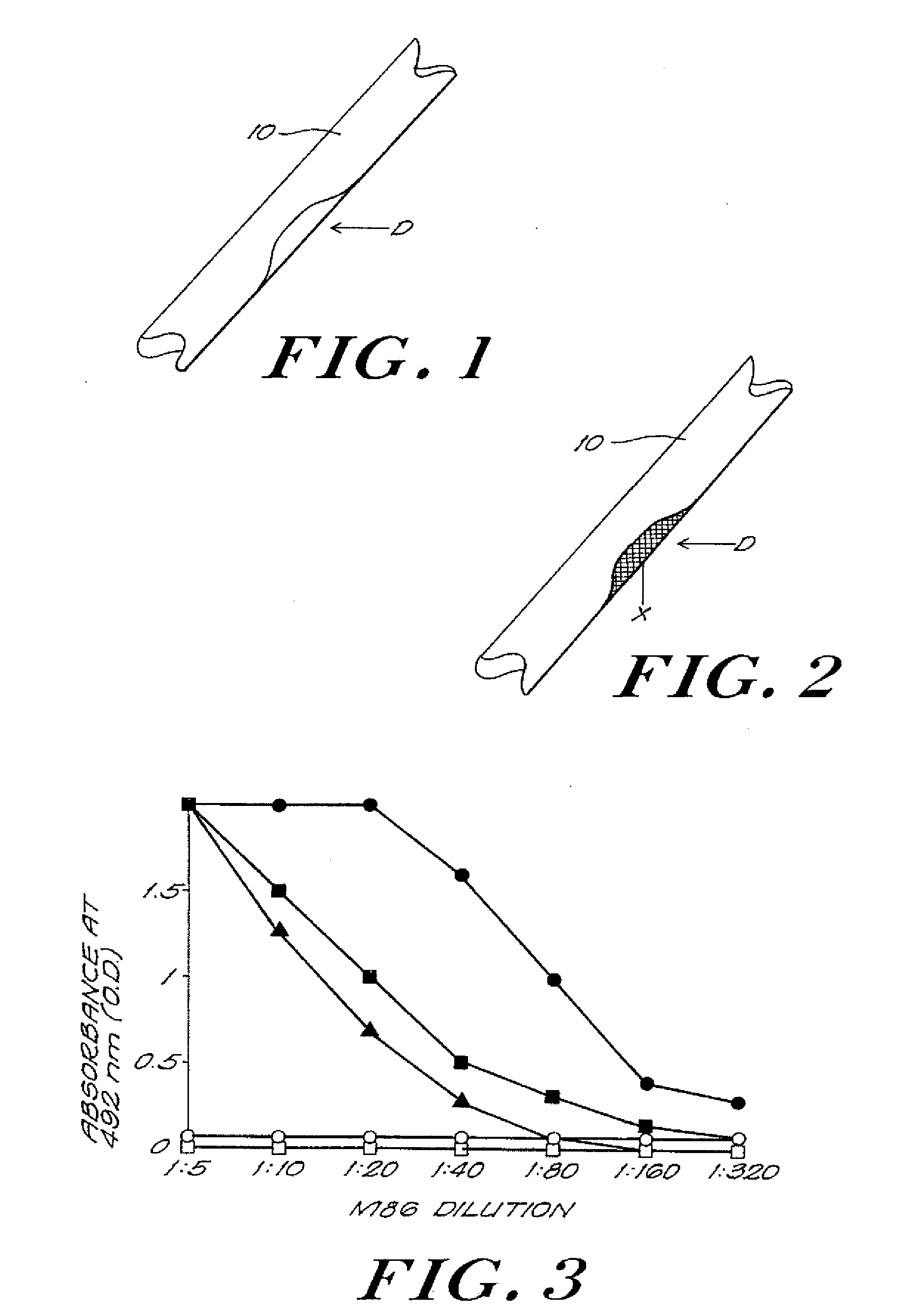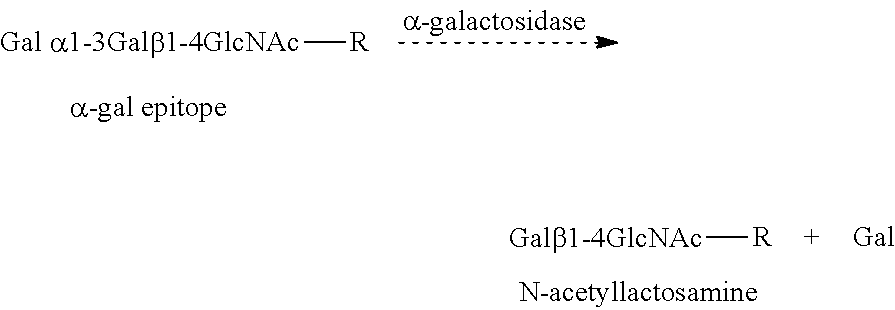Bone Xenograft
a bone xenograft and bone technology, applied in the field of bone xenograft, can solve the problems of inability to transplantable autologous bone tissue for large defects, poor bone id filling effect, and high postoperative morbidity
- Summary
- Abstract
- Description
- Claims
- Application Information
AI Technical Summary
Benefits of technology
Problems solved by technology
Method used
Image
Examples
example 1
Assay for α-Gal Epitopes' Elimination from Bone by α-Galactosidase
[0063]In this example, an ELISA assay for assessing the elimination of α-gal epitopes from bone is conducted.
[0064]A monoclonal anti-Gal antibody (designated M86) which is highly specific for α-gal epitopes on glycoproteins is produced by fusion of splenocytes from anti-Gal producing knock-out mice for α 1,3 galactosyltransferase, and a mouse hybridoma fusion partner.
[0065]The specificity of M86 for α-gal epitopes on glycoproteins is illustrated in FIG. 3. M86 binds to synthetic α-gal epitopes linked to -bovine serum albumin (BSA), to ▴-bovine thyroglobulin which has 11 α-gal epitopes, R. G. Spiro et al., Occurrence of α-D-galactosyl residues in the thyroglobulin from several species. Localization in the saccharide chains of complex carbohydrates, 259 J. Biol. Chem. 9858 (1984); or to ▪-mouse laminin which has 50 α-gal epitopes, R. G. Arumugham et al., Structure of the asparagine-linked sugar chains of laminin. 883 B...
example 2
Assessment of Primate Response to Implanted Bone Treated with α-Galactosidase
[0067]In this example, porcine bone implants are treated with α-galactosidase to eliminate α-galactosyl epitopes, the implants are transplanted into cynomolgus monkeys, and the primate response to the implants is assessed. An exemplary bone portion 10 with a defect D is shown in FIG. 1.
[0068]Porcine bone specimens are sterilely prepared and the surrounding attached soft tissues surgically removed. The bone specimens are washed for at least five minutes with an alcohol, such as ethanol or isopropanol, to remove synovial fluid and lipid soluble contaminants.
[0069]The bone specimens are frozen at a temperature ranging from about −35° C. to about −90° C., and preferably at a temperature up to about −70° C., to disrupt, that, is to kill, the specimens' bone cells.
[0070]Each bone specimen is cut into two portions. The first bone portion is immersed in a buffer, such as citrate buffer solution, with a pH ranging f...
example 3
Assessment of Primate Response to Implanted Bone Treated with α-Galactosidase, Sialic Acid-Cytosine Monophosphate and Sialyltransferase
[0080]In this example, porcine bone implants are treated with α-galactosidase to eliminate α-gal epitopes, as described in Example 2. The implants are further treated with sialic acid-cytosine monophosphate (SA-CMP) and sialyltransferase to cap carbohydrate chains with sialic acid. Sialytransferase facilitates the transfer of the sialic acid from the SA-CMP compound to the xenograft. The sialic acid links to and thus caps the carbohydrate chains. The cytosine monophosphate provides the necessary energetic level to the sialic acid for such linking and capping. Capping with sialic acid interferes with the ability of the subject's immune system to recognize the xenograft as foreign. The negative charge of the sialic acid further interferes with the ability of the bone antigens to bind with non-anti-Gal anti-bone antibodies (i.e., antibodies binding to b...
PUM
| Property | Measurement | Unit |
|---|---|---|
| temperature | aaaaa | aaaaa |
| size | aaaaa | aaaaa |
| concentrations | aaaaa | aaaaa |
Abstract
Description
Claims
Application Information
 Login to View More
Login to View More - R&D
- Intellectual Property
- Life Sciences
- Materials
- Tech Scout
- Unparalleled Data Quality
- Higher Quality Content
- 60% Fewer Hallucinations
Browse by: Latest US Patents, China's latest patents, Technical Efficacy Thesaurus, Application Domain, Technology Topic, Popular Technical Reports.
© 2025 PatSnap. All rights reserved.Legal|Privacy policy|Modern Slavery Act Transparency Statement|Sitemap|About US| Contact US: help@patsnap.com



